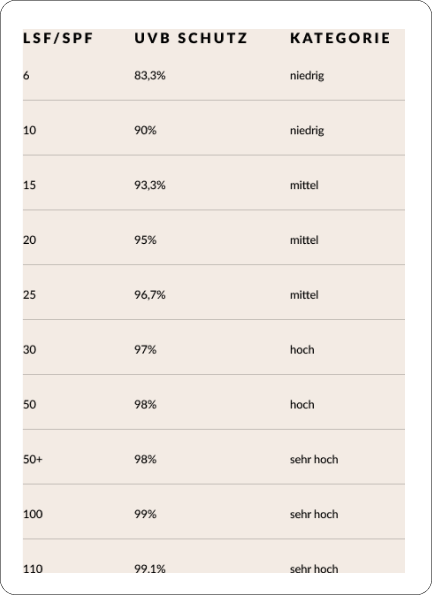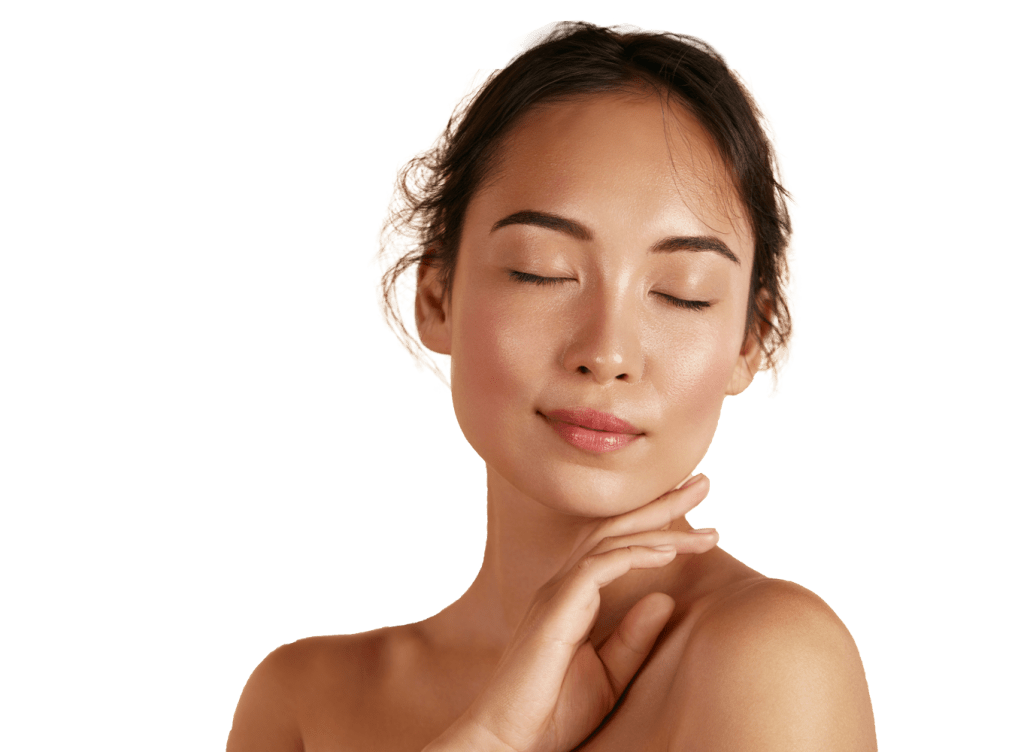We are therefore often asked by you whether the day cream with sun protection factor (SPF) is sufficient for longer stays in the sun.
In general, we recommend proper sun care to protect against UV-A and UV-B radiation. A Liverpool research group found out that cosmetic products with a sunprotection factor are applied much thinner than conventional sunscreen. That sounds plausible: Who would want to smear two finger lengths full of make-up on their face?
Furthermore, most cosmetics with SPF do not offer UV-A protection . However, it is precisely this radiation that is known for its accelerating effects on skin aging. In addition, most of us avoid areas of the face when applying care or sun protection. The eyes and bridge of the nose are particularly affected. So, in addition to applying sunscreen, you should also wear sunglasses .
But what is the best way to apply a sunscreen? The answer is in our video tip : “ UV Camera Reveals The Best Way to Apply Sunscreen to Your Face ” by Gizmodo.
We have summarized this – together with many other tips for the right skin care after the summer – in a guide . As a subscriber to our newsletter, you will receive the exclusive HY STUDIO after-sun guide for free ! Simply register now and we will send you our guide.
Roughly speaking, you can remember that UV-B rays are responsible for sunburn. UV-A rays, on the other hand, promote skin ageing. Short-wave UV-B radiation mainly penetrates the upper layer of the skin (epidermis). This is also where the melanocytes are located, i.e. the cells that make your skin turn brown. Long-wave UV-A radiation tends to penetrate the deeper layers of the skin (dermis), where it has a direct effect on the elastic fibers.
The basis of good sun protection is knowing your skin’s natural self-protection time.
Sun protection is based on this. The sun protection factor (SPF) multiplies your natural protection time. However, this only applies to UV-B radiation.
A small example: As a skin type I person, I can go out in the sun unprotected for 10 minutes. If I now use a sunscreen with SPF 50, my natural self-protection is multiplied by 50 to a total of 500 minutes, i.e. a good 8 hours. However, I can’t extend this time by applying sunscreen more than once, and according to an EU recommendation, UV-A protection corresponds to one third of UV-B protection. Three stars on a product mean that it complies with the EU recommendation. Five stars even promise a 1:1 ratio of UV-B and UV-A protection.
Doch wie wird ein Sonnenschutzmittel nun am besten aufgetragen? Die Antwort gibt es in unserem Video-Tipp: “UV Camera Reveals The Best Way to Apply Sunscreen to Your Face” von Gizmodo.

You can see from the following table that there will never be 100% protection against UV-B radiation. We therefore recommend avoiding as much intense sunlight as possible despite good skin protection and applying the right amount of sunscreen.
The two-finger rule applies to the face and neck: extend your index and middle fingers and apply a strip of sun cream to both fingers. Spread this amount over your face. Incidentally, day creams and BB creams with SPF often have too little effect, as they are usually not applied in the necessary amount – it is better to use proper sun care.
As many of you know, our skin plays an essential role in the formation of vitamin D, which is needed for bone synthesis. But don’t worry: as sunscreens never block 100% of UV-B radiation, there is no risk of reducing vitamin D production too much by using a high sun protection factor.
Furthermore, we absorb vitamin D through food (mostly through animal products) and consume the vitamin D stored in our fat and muscle stores during the winter months – so there is sufficient vitamin D available to you all year round.
Your ideal sunscreen should not contain irritants such as harmful alcohols or fragrances that can cause allergies, should be easily absorbed and not leave a white haze, and should be photostable – meaning it should last as long as possible in contact with sunlight.
All in all, you should try different products to find your perfect routine. Remember to reapply your sunscreen regularly, especially after sports or swimming.
Everyone is currently talking about the “vampire lift”, also known as “PRP therapy”. The vampire lift is a form of autologous blood therapy that can improve the appearance of the skin.
PRP stands for “platelet rich plasma”. Platelets is another term for thrombocytes, the blood components that are responsible for blood clotting, among other things. A small blood sample and subsequent centrifugation the platelets are first collected and then injected manually. The independent doctors at HY STUDIO primarily use the concentrate on the face, neck and décolleté area.
Platelets release various substances that support repair processes in the tissue and can therefore promote the collagen structure and blood circulation in the skin. Autologous blood therapy can thus improve the skin structure and usually help to reduce the first wrinkles.
The vampire lift at HY STUDIO usually takes just under an hour. You will find out everything you need to know about post-treatment and possible undesirable effects in a detailed consultation with our independent doctor.
Our skin has many great properties: The elastic fibers not only give it structure, they also act as a structure to maintain the water depot and provide the skin with constant moisture.
Over time, however, the skin loses its elasticity and wrinkles appear. Most of us therefore turn to anti-wrinkle creams.
Although various cosmetics companies promise us wrinkle-free skin with products containing hyaluronic acid, these generally do not stand up to closer scrutiny – the hyaluronic acid contained in creams is usually unable to penetrate all layers of the skin due to its molecular properties.
Our independent doctors therefore use so-called skin boosters. This very fine hyaluronic acid is injected under the skin and restores moisture. We rely on the skin quality-improving properties of hyaluronic acid and not on a filler effect.
With increased sun exposure, the skin reacts in various ways with a protective mechanism: the skin surface typically not only darkens in color but also thickens. In some cases, this also results in a tendency to form wrinkles and pigmentation spots.
To intervene at this point, we at HY STUDIO offer you a gentle and effective Glow peel is a gentle and effective way to treat your skin. Chemical peels exfoliate the skin, making it more receptive to active ingredients and stimulating collagen production, make the skin look refreshed, usually reduce small wrinkles and generally make the complexion appear more even.
Our peeling contains glycolic, lactic and salicylic acid. You will certainly be familiar with salicylic acid from aspirin, which, in addition to its pain-relieving effect, also combats inflammation. Our glow peeling is therefore also suitable for blemished skin. The lactic acid it contains is also a natural component of our acid mantle, regulates the pH value of our skin and has an antimicrobial effect. It is recognized by the body as natural and therefore causes less skin irritation than conventional, more aggressive peelings. Glycolic or fruit acid gently removes cornification from the top layer of the skin, opens the pores and removes impurities.
You can find out everything you need to know about glow peeling in a consultation with our beauticians in our studio. It is important that you apply sun protection after the treatment – preferably SPF 50.
The upper cell layers of our skin are particularly susceptible to the effects of processes that damage the circulation and blood vessels. These include nicotine, alcohol, certain medications and drugs. Your skin quality is therefore very much dependent on your lifestyle.
To do something good for your skin – and your health in general – you should incorporate exercise into your daily routine, eat a balanced diet and avoid toxins such as nicotine, alcohol, certain medications and drugs. This promotes blood circulation in the skin and thus significantly supports your appearance.

Our treatments for sun-kissed, stressed skin: